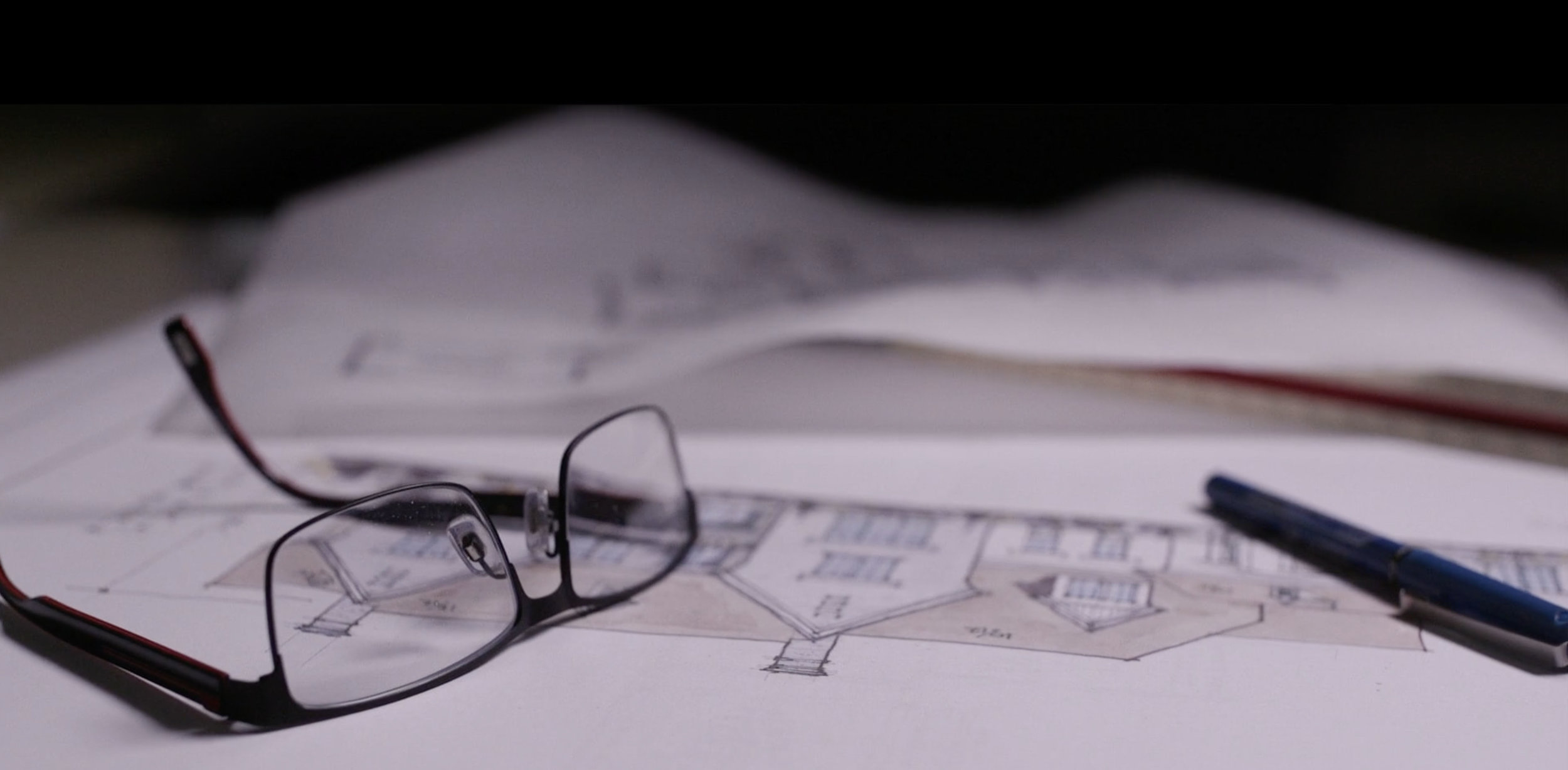
DESIGN BLOG
Jim’s Tip: Marble Floors – What We Need to Know
Based on pictures shared with us from HOUZZ and PINTEREST by our clients, we are seeing more and more marble in upscale baths. The walls and countertops are not an issue, but the floors provide some challenges for both designer and builder.
The Tile Council of North America, TCNA, requires that any floors with natural stone applied must be designed with a deflection of L/720, twice as stiff as code requires L/360 (“L” is the length of the clear span of the floor joist in inches). The challenge is that we have no idea what your client is going to select when we lay out the structure for the house. If we know ahead of time, stiffening that floor area is simple. After the fact it may become very expensive.
Changing the subfloor or the backer board isn’t going to provide the required rigidity, you’ll have to add additional joists. This may mean removing and replacing HVAC, plumbing and electric to get these joists into place.
The simple solution for designers and engineers is to add a disclaimer to the plans, but that doesn’t help you one little bit. The best choice is for all of us to be aware of the potential problem and attempt to get a determination or at least a direction on floor surface selections from the homeowner before we complete the plans. If homeowners know there will be a lot of extra cost to change the floor later, that may help them make some decisions earlier.
Let’s work together on solving this one!
I never recommend social media links to anyone but recently I came across Build w/Matt Risinger, a channel on YouTube with a lot of detailed construction information. He’s a custom builder in the Austin, Texas area and he is talking about performance vs. prescriptive codes; contemporary interior trim details, soundproofing tricks, hidden door ideas, etc. All in all, this is a very informative group of videos. His channel publishes new content twice a week so you can watch what interests you.
Below is a link to a short video from Matt on traditional framing vs. high-performance framing techniques. He walks you through two houses while talking about and pointing out the differences.
https://www.youtube.com/watch?v=UDsaMFY3OcE I hope you find it as interesting as I have.
The Demo and Remodeling of a Kitchen
Are you thinking about remodeling your kitchen? Do you know what is involved, or do you only have HGTV as your guide? At RDS, one of our clients is in the thick of a kitchen remodel and we thought we’d keep you updated and involved in the remodel. Knowledge is power, and our designers can help you navigate this process.
If you’ve been following our Front Porch Video series on FB this is the first of three episodes about the remodeling of a kitchen and what to expect during the process. If you haven’t seen our Front Porch Video series, we’re excited to have you start watching!
There are many ways to remodel or update your kitchen. Cabinets can be refaced, doors replaced, simple hardware updates can be made, or the cabinets can be completely removed, and new ones installed. In this home, everything has been removed and they’re starting over!
What You Might Find (And We Did):
In this home, the original kitchen had an illuminated ceiling like many homes from the 1980’s. A lot of light but a low ceiling of plastic panels. Removing this along with the soffits will open up the room visually. Since the lighting will change over to can lights and undercabinet fixtures, the wiring and switches will have to be reworked.
Removing soffits comes with its share of problems. Very often, plumbing lines and HVAC ducts are hiding within, so they must be relocated or at least moved so that they are very close to the ceiling.
In this project, the remodeler, Dave Osmond Builders, had the experience and foresight to leave about 6” of space above the cabinets, allowing drain pipes and ducts to be hidden behind crown molding. This is something to know about and understand when remodeling and pipes and ducts need to be hidden.
Taking everything back to the bare bones of the room makes for a messy, dusty workspace! Doorways to other rooms need to be closed off to keep dust to a minimum. Drywall and trim debris must all be hauled out to the rented dumpster in the driveway.
How does the flooring look? In this home, a tile floor is being removed. There are many flooring options, but these clients chose a site finished hardwood that will be ¾” thick. You could also use a new tile, hardwood laminate, or engineered hardwood, each may have a different thickness and the cabinets must be placed to accommodate that dimension. You don’t want your dishwasher installed and not be able to get it out later when it needs to be replaced.
Keep checking back for more info and photos for this project. This Front Porch Video shows you all the details as this kitchen remodel begins. We’d love to work with you to design your kitchen remodel and help you guide your way through what will be an amazing transformation, no Property Brothers needed!
Kitchen Countertops - What to Choose?
When you are building a home or remodeling an existing home, you have so much to think about when selecting design options. One of the biggest and most visible are your kitchen countertops! There are so many incredible options available. The trends are always evolving, yet some continue to hold their value, charm, and appeal.
Recently, at RDS, we launched our Front Porch Friday video series. Our first video focused on kitchen countertops and we’d like to continue the discussion in this blog. What do you need to know about the current trending countertops and what is making its way onto kitchen counters?
Here and Trending:
Granite:
- Every piece is unique and distinct in its appearance
- It looks luxurious which makes it a very popular choice
- It is resistant to heat, nicks, and normal use
- The larger the piece makes it harder to match
- If sealed properly and routinely, it is very durable
- It is still expensive, but slowly becoming more affordable
- A durable prep surface
Engineered Quartz:
- A manufactured stone product that is almost maintenance free
- Extremely durable making it scratch, heat, stain, and impact resistant
- Available in a wide range of colors and styles
- Being non-porous means it doesn’t need to be sealed
Butcher Block
- Very appealing as an accent piece
- Creates a feeling of warmth
- Easy to clean, but must be properly sealed
- Sealing properly gives it antimicrobial properties, making it more sanitary for meal prep
- Can be damaged by stains and water, but can be sanded and resealed
Up and Coming:
Quartzite:
- A very durable surface that withstands heat
- Appearance is more like granite than manufactured quartz since it is a naturally occurring rock
- High-end look
- Needs to resealed every year or it can stain
Marble:
- Seeing more and more of it
- Natural look is comparable to quartzite and granite, but more subdued in color
- Product is very soft, making it susceptible to scratches and stains
- Needs constant tender loving care and sealing
- Elegant look
- Expensive
- Waterproof and heatproof
Concrete:
- Not what you find on your basement floor
- One of a kind, unusual industrial look
- It is versatile, able to cast to your specific size and shape
- Tinted to any color, mixed with glass or tile, textured, or polished
- While it is porous, it can be sealed
- Custom work makes it a bit expensive
- Scratch and heat resistant
Whatever you choose, your kitchen will be a reflection of your dreams for the space. Our designers would be happy to meet with you and help you make the perfect choice for your newly designed kitchen. Do you have more questions about countertop products? Konkus Marble & Granite, one of our trusted suppliers, is here to guide you in your search.



